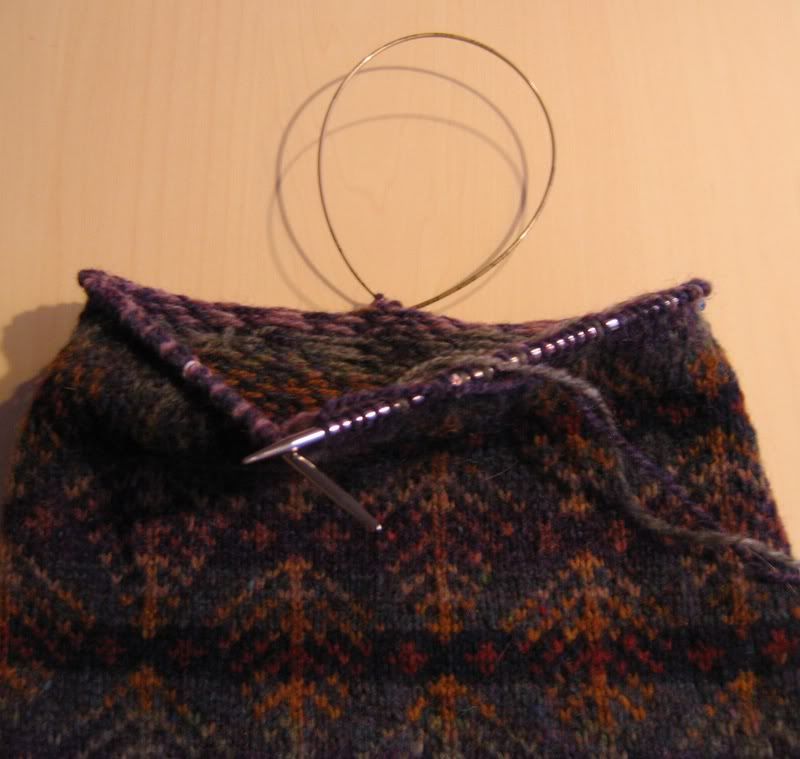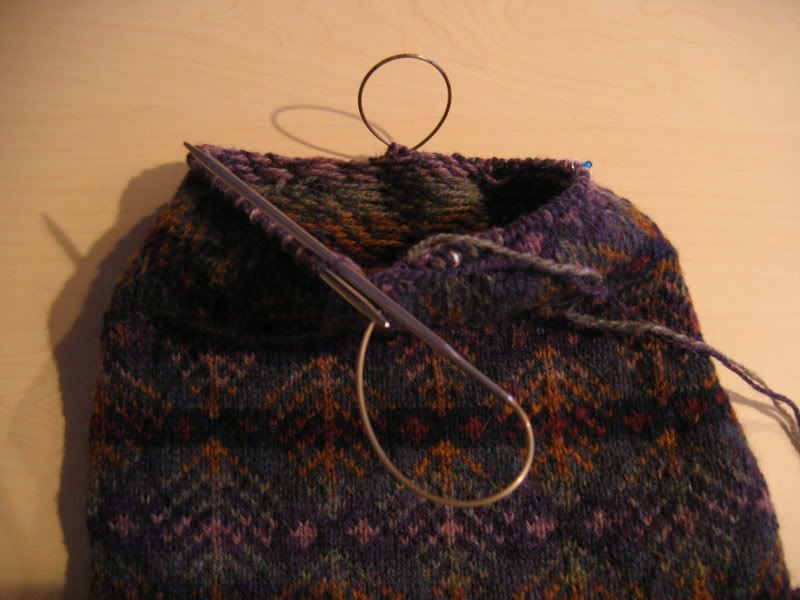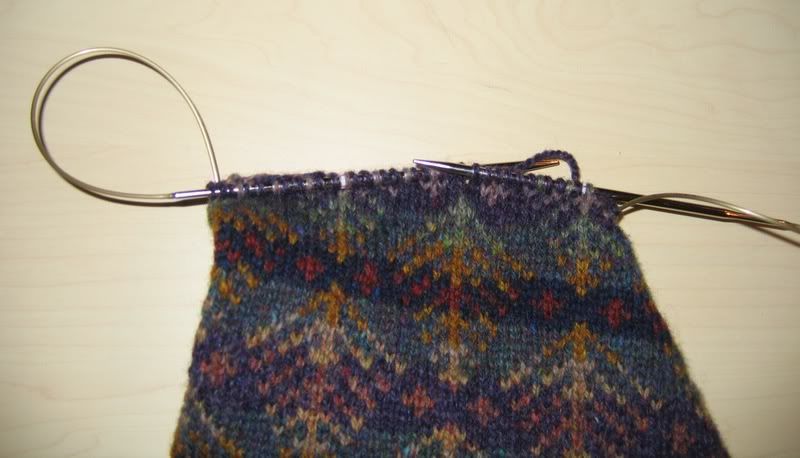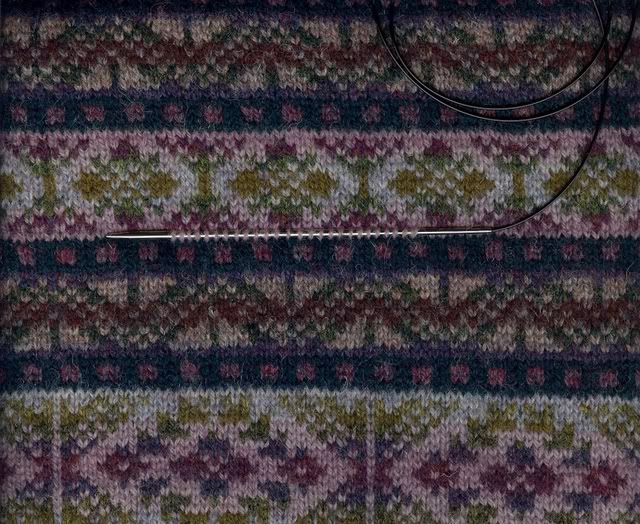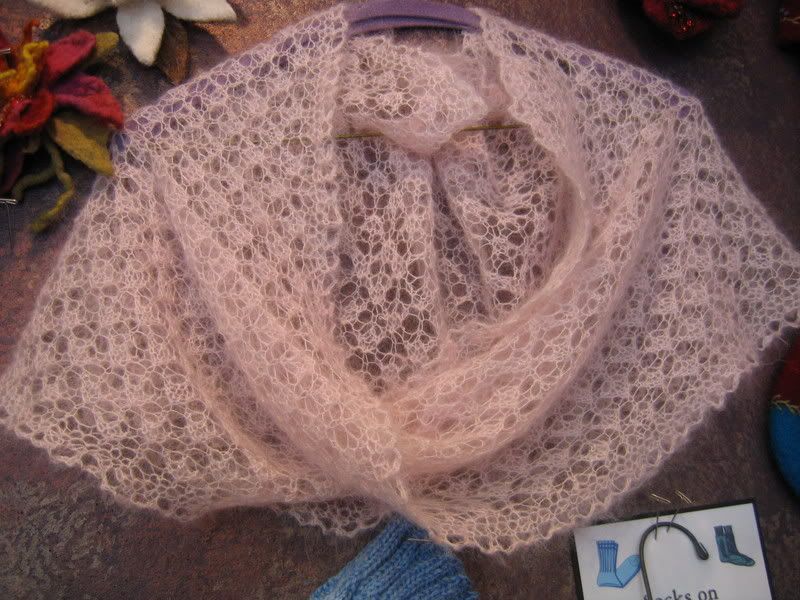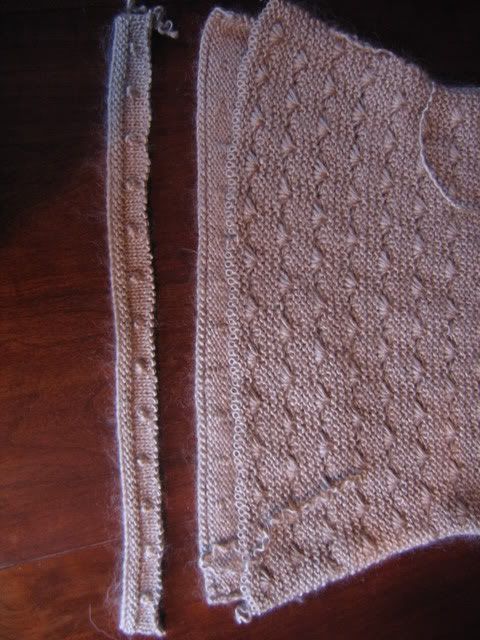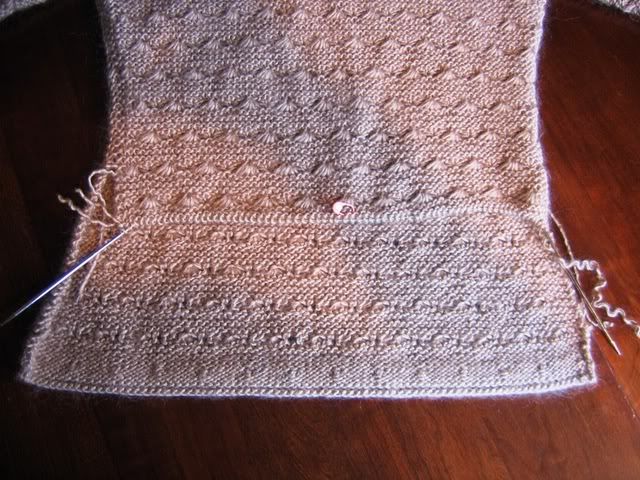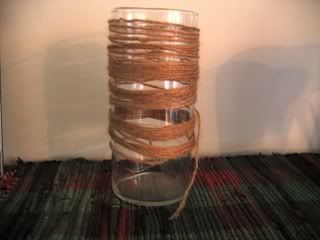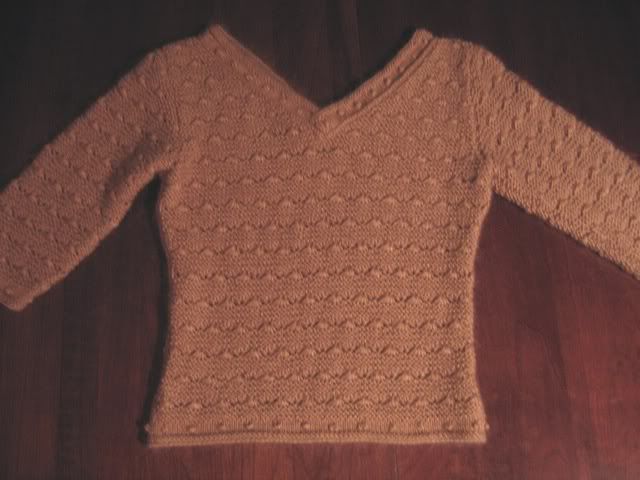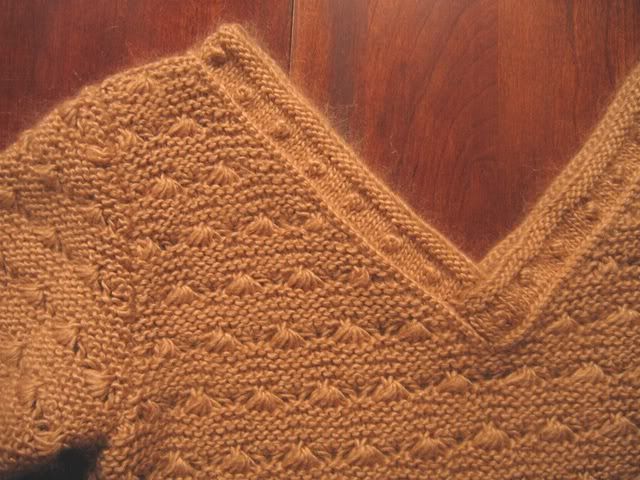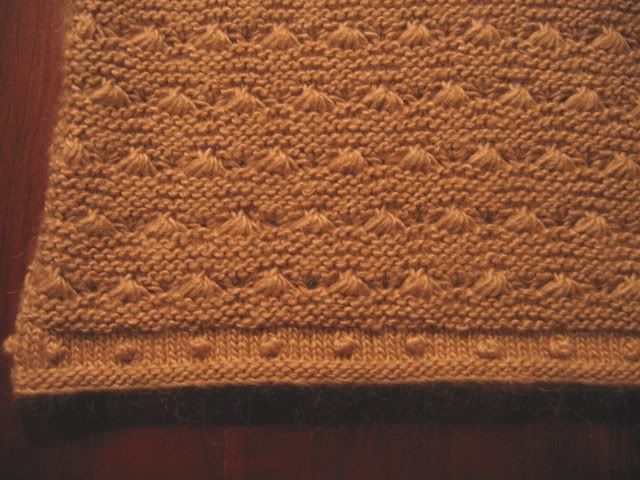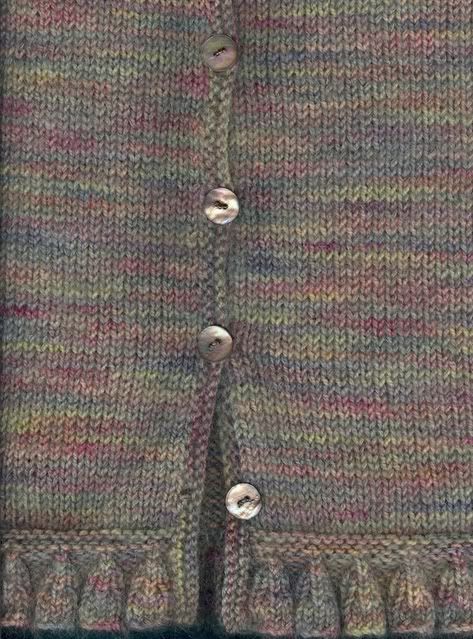I’m wearing it as I type this post. It’s a cold, windy day here in Washington, D.C. and the Blue Shimmer is soft, cozy, and warm. It looks beautiful, too, although my sad attempt to take some photographs of it this morning won’t show it off to best advantage.
I’m even going to violate my usual role of no modeling because the way that these Bohus/yoke sweaters drape so nicely over the shoulders is an essential part of the look and fit, and you just can’t see that when they are on a hanger or lying flat. My daughter/model is not home and I just didn’t think I could talk my 15-year-old son into slipping it on, even if he is still half-asleep. (*Takes deep breath as she prepares for self-humiliation.) So, without further ado, here are some photos:
I’ll work up to the modeling gradually by starting with my hand.

Lying flat, which doesn’t show it off but allows you to see the color I added at the hem of the sleeves and body. (The pattern called for ribbing.)

Here is a close up of the yoke.

And finally, my self-portrait.

Pretty artsy, eh? What can I say? I was the only one here besides aforementioned half-asleep son so I had to take the photo myself.
I’d like to add one additional comment about knitting Bohus sweaters. In the book, Poems of Color, the directions suggest using a US 3 for the unpatterned parts of the sweater (sleeves and body), a US 2 for the patterned area (the yoke), and a US 1 for the ribbing (which I didn’t knit). In my experience, the needle sizes suggested for the patterning and the plain knitting should be reversed. The reason is that most knitters will find that their plain stockinette knitting is “looser” than the fair isle-type patterning called for with the yoke. If that is true for you, and you use a larger size needle for the plain area, the problem will be compounded and your sweater will tend to balloon out when you hit the body.
Therefore, I knit the yoke on a US 3 and switched to a US 2 for the body and sleeves. For me, the results were perfect in terms of gauge. From my quick glance at the directions in my new Swedish kit for the Large Collar, it looks as if those directions use the same needle for the yoke and body (with a smaller needle for their ribbing). Again, I will adjust and go up a needle size on the color work. Those directions have you split the sweater after the yoke, so that the body and sleeves are not knit in the round but back and forth. That can also affect gauge. I plan, when I eventually get to that sweater, to knit it in the traditional Bohus way: completely in the round.
My Blue Shimmer has no seams. None. Once you finish the knitting, there is minimal finishing work and the sweater itself fits wonderfully and is very comfortable. I personally see no benefit to adding seams, although everyone’s view is different. Here is one last photo, showing the underarm of the Blue Shimmer so that you can see what I mean by no seams.


